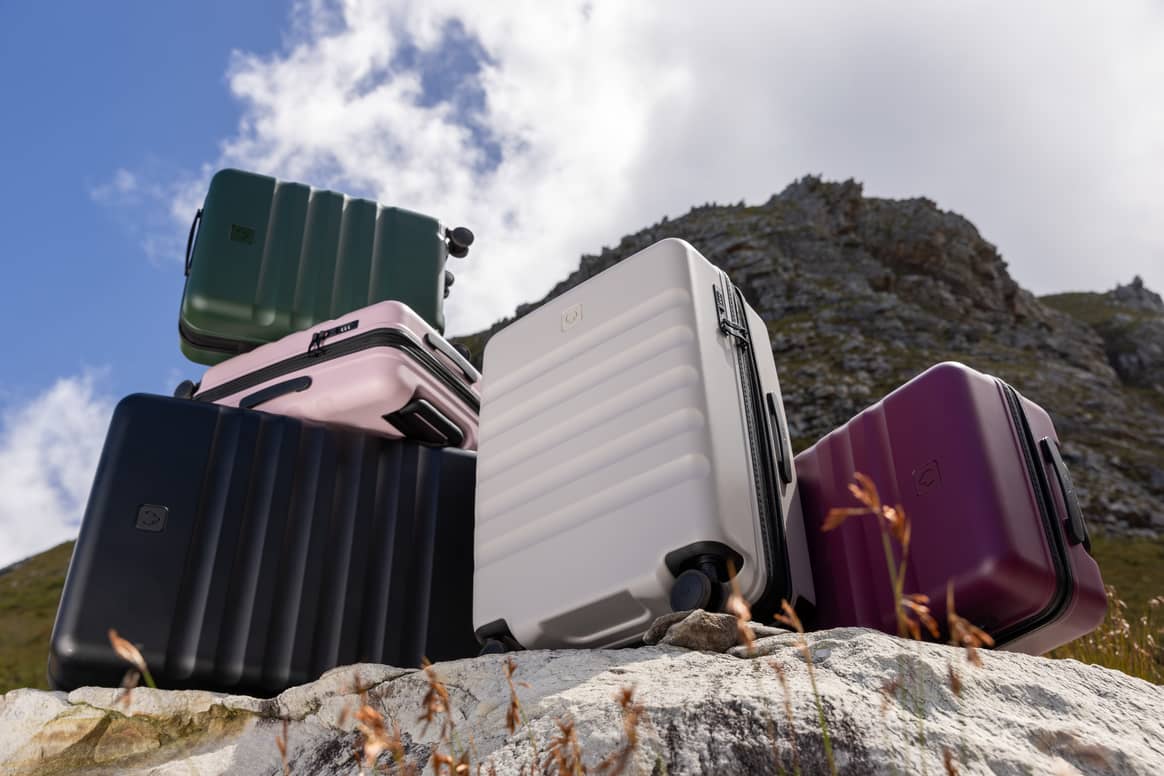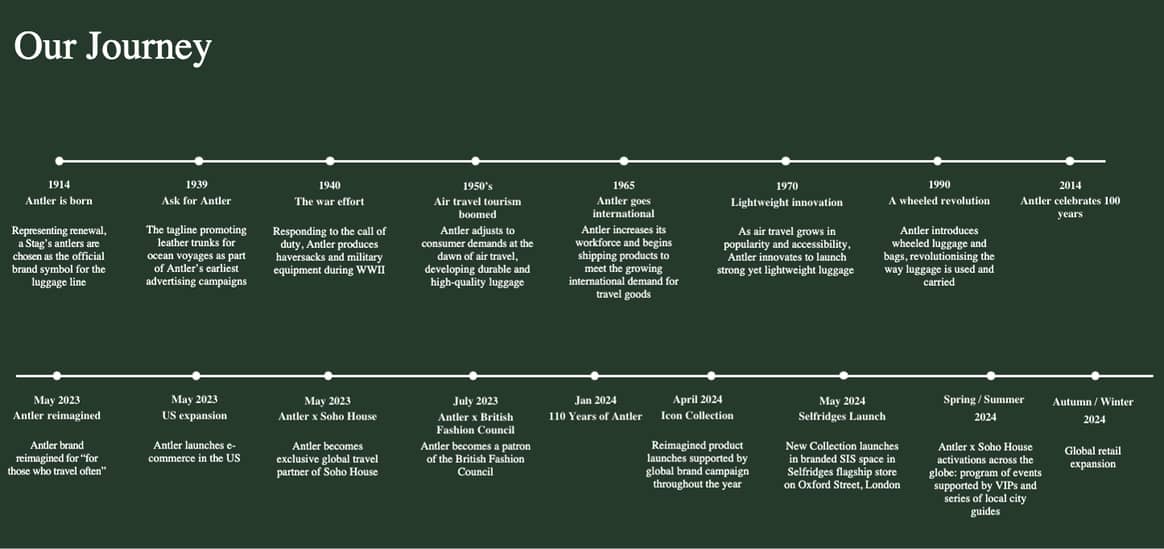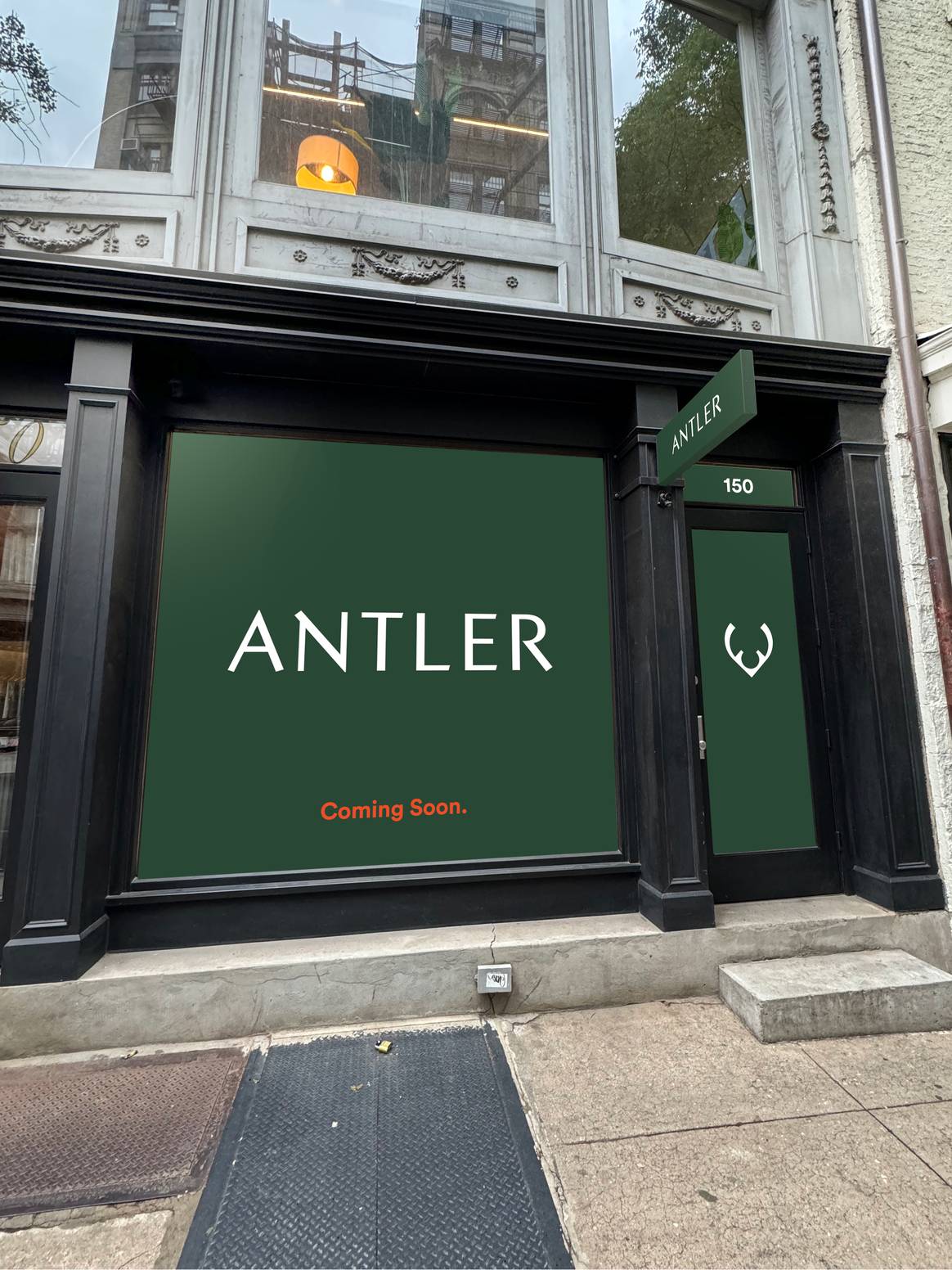Engaged in the clothing industry for 20 years.

Bringing luxury to luggage, the 100-year-old British brand Antler eyes US growth
The 100-year old British brand, Antler, is redefining luxury travel experiences for modern jet setters. The brand is in flight to have its biggest summer of travel ever and with a 6-month retail residency beginning next month in the heart of NYC’s Soho it’s ready to demonstrate to the US market why, after a century in business, its journey has merely just begun. Managing Director, Kirsty Glenne, spoke to FashionUnited about how “luxury sits at the foundation of the reiteration of this gorgeous brand.”
How exactly has Antler rebranded itself as a luxury luggage brand?
We didn’t set out to make a luxury brand. It is very democratic, and we’re proud of giving great quality to many people. However, to build a brand in today’s macro-climate you’ve got to have a clear set of principles to guide you through. A brand needs to be grounded in a DNA and codes, something luxury brands have in common. I was at Alexander McQueen for seven years, and because I was working at the C-suite level within the Kering group, I was exposed to Saint Laurent, Gucci, Balenciaga, and we shared a lot between the brands. Our Marketing Director came from Aspinall and Mulberry; our Finance Director from Soho House, a different kind of luxury. So between us all, everyone’s quite informed on how to protect a brand, and I think that’s really helped us find our own beating drum for Antler in this new phase of growth.

What was the first step to reimagine the brand?
We worked with an agency for the launch in May last year, and the members were all ex-Burberry, had worked with heritage brands before, and knew how to story tell. We like to talk about “learnings from luxury.” As a result the brand color Antler Green now exists as a foundation of the brand’s Britishness. We felt that shade of green could travel the world and be identifiable as British without having to say it. That’s one code of what we call our travel house.
Did the company archives influence the brand revamp?
“Serving those who travel often” is a tagline from our archive. We found it in vintage advertising campaigns, and we loved it because in order to serve those who travel often you have to make really high quality luggage. It has to be durable and stand the test of time, so we built that tagline into the rebrand, you’ll see it everywhere. Born in Britain, 1914, for those who travel often. Luxury brands are always looking backwards, into their archives, for inspiration, but they’re not necessarily directly translating it. There’s always a reinterpretation, a rejuvenation, to make it relevant for the future.
How did archive research influence the design of the product?
We’re very proud of our handle which exists on the Icon suitcase and is customized in house. The handle and the wheels of luggage are the most important considerations for a pleasurable travel experience. The handle is designed to fit into the palm of your hand for today’s use which is kind of push and glide as opposed to pull. In our vintage advertising campaigns the cushion grip handle was highlighted because back then there were no wheels, you needed a very comfortable handle because you had to carry everything in this gorgeous leather luggage. So we’ve kept that alive and when you touch it, it’s got this gorgeous rubber style finish. A principle of design is to address the pain points of today and that’s what we innovate towards. We’re looking backwards to be inspired for the future, but staying relevant to what the customer needs today. The Antler stripe is another of our codes. It leans into the past when luggage had to be strapped onto the back of a car with leather but today it’s used to add strength and durability to a case. If you have a straight front flush case, it’s less strong than one with grooves.
So, codes were the building blocks of the house?
Yes. Just as the Alexander McQueen shoulder is a code of their house, clothing for the empowerment of women is another code, as is the floral motif and the concept of juxtaposition. These ideas show up consistently in the designs in different ways, but they actually boil down to about five ideas. Through research of our archives and working together as a team, we’ve built this very clear identity and tone of voice by applying a careful set of codes suitable for, in this case, a luxury travel house.

Given that many European luxury fashion houses started with luggage, do you have plans to expand into other product areas?
We are actually already there. For 100 years, we’ve been a luggage maker, but over the last two years we’ve repositioned as a British lifestyle brand with a range that goes beyond suitcases. We have companion backpacks, overnights and accessories that all work together as a system so that you can build the ultimate bundle, tailor the travel stack to be an extension of your style. Many bags have a strap on the back that slots onto a case trolley handle and sits nice and snug. Each item has a reason to exist, and everything is designed with the use case of travel, emphasizing functionality, pockets, the laptop all safe and separated. But we have a lot more in the pipeline for the backpack and travel bag space.
But no waitlist leather purses, or even apparel?
There is possibly some leather coming in the next few months, which is gorgeous. And a whole travel world being designed including caps, but the sky is the limit for the brand. There’s freedom within the framework to play and there are a few capsules in the pipeline. It’s too early to talk about yet, but the vision is quite large and exciting.

What is the strategy behind the retail residency in NYC and why is it more than a pop-up?
Residency is a term that we’ve coined because we felt it was more fitting for travel. So it’s a home for us in New York, and more than a pop-up because of the timeframe. It’s flexible retail, at least a year but with options to extend or make it permanent. We’re de-risking our initial market entry which we see as quite smart, macroeconomics being what they are. However, should the location not be the right one, then we can also travel to the next place. So we like to be agile. In saying that, it’s still over a million dollars for the brand, and a big chunk of our total spend, so we’re taking it very seriously. We’re fitting it as if it were a permanent store for experience and conversion.
What did last year’s soft launch in the US entail?
It was simply expanding our direct to consumer footprint into the US with the addition of warehouse fulfillment. It’s feasible today to ship from anywhere but we introduced a local 3PL so that we could offer a level of service that the US customer expects. That was phase one, and we had a great response with it very quickly, because it’s something different in the market. Phase one’s success gave us a data point to invest more and be more purposeful, hence we’re fast-tracking the US physical footprint, and we also have a roll out of wholesale planned for phase two.
What’s behind your predication that this will be the biggest summer for travel yet, post-pandemic?
Research has told us that as a category travel is one still in high growth, and China can travel again. It’s taken a long time for everyone to mobilize, but Japan is open again and is one of the big destinations. I think also the US and the UK, and the fluidity between the markets that existed before the pandemic is well and truly back. Equally, there’s a new consumer who wasn’t as prominent before the pandemic, and that’s the staycationer. Short travel is more acceptable post-pandemic, and now a genuine business. And all those people need luggage. There’s also the the customer who’s living hybrid. I’m an example of that and I’ve got a few on my team who travel with a bag to work because they live somewhere else, and maybe stay overnight in a city. The travel audience is just much bigger.


